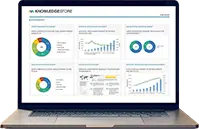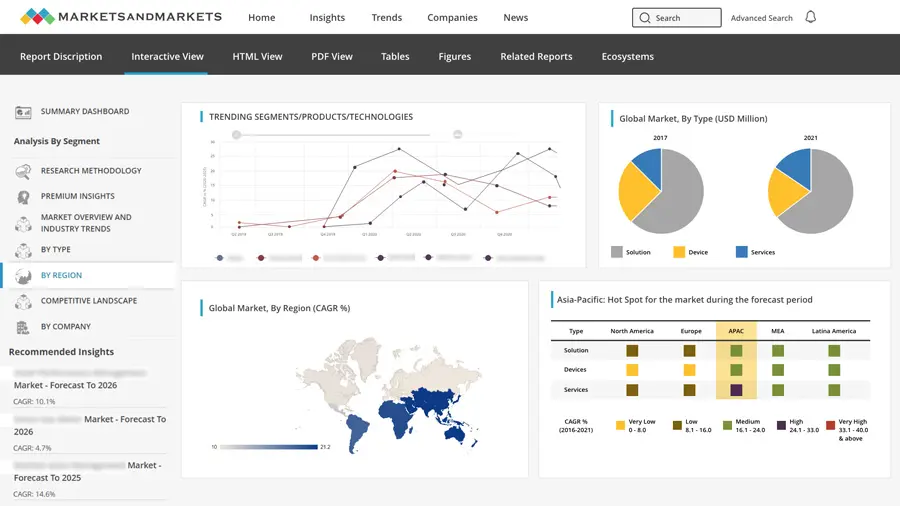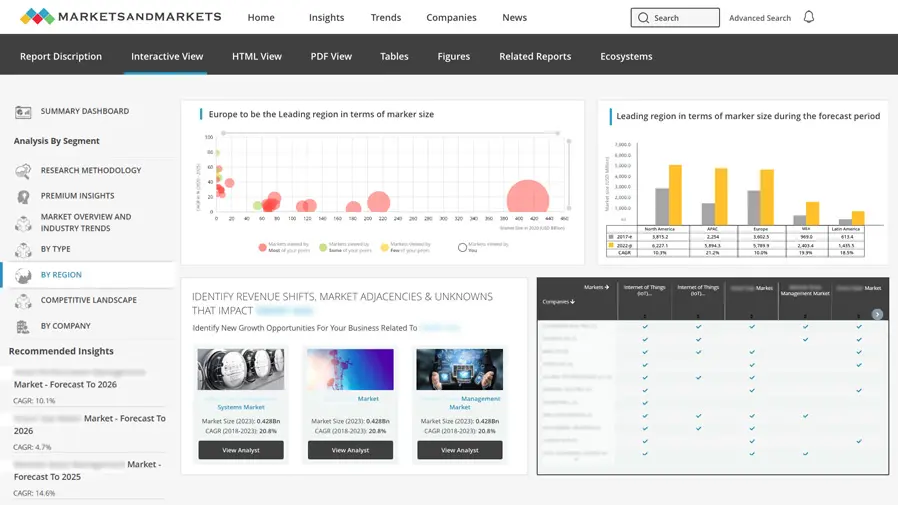Mainframe Modernization Services Market - Global Forecast to 2029
The mainframe modernization services market is projected to grow from USD XX billion in 2024 to USD XX billion by 2029 at a compound annual growth rate (CAGR) of XX % from 2024 to 2029. Modernizing mainframes to align with digital transformation strategies helps organizations remain competitive. Use of microservices helps improve flexibility in an organization, accelerating new feature deliveries. Using DevOps enables simplified workflows, improves collaboration and integration and allows continuous delivery and integration. The containerized application facilitates scaling and portability among different environments to ensure effective utilization of resources. Such approaches develop innovative and foundational support towards next-generation technologies, which can further enable better business results through AI and ML.
ATTRACTIVE OPPORTUNITIES IN MAINFRAME MODERNIZATION SERVICES MARKET

To know about the assumptions considered for the study, Request for Free Sample Report

USE CASES OF AI/GEN AI IN MAINFRAME MODERNIZATION SERVICES
Generative AI is transforming mainframe modernization services through various impactful use cases. The code refactoring can be automated to translate the legacy code into modern programming languages with precise optimization for data migration in cloud-based environments. AI-driven intelligent debugging identifies and resolves the issues in legacy systems and performance tuning suggests the best configurations to enhance the application efficiency. It auto-generates test cases for modernized systems and provides natural language queries to allow easy interaction with legacy databases. Generative AI creates the most recent documentation for the system from legacy codebases, conducts risk analysis on the dependency, and even allows interactive code translation to support manual tasks. It further allows planning for workload migration with strategies for efficient redistribution that make modernization processes streamlined and effective.

Mainframe Modernization Services Market Dynamics
Driver: Reducing operational costs tied to legacy systems
Organizations embracing mainframe modernization primarily target reducing operational and maintenance costs, which are heavily driven by migration from legacy hardware and software to either cloud-native or hybrid infrastructures. Mainframes generally require highly specialized hardware as well as proprietary software, resulting in extremely high licensing fees and high energy consumption along with substantial hardware maintenance costs. New systems leverage scalable cloud platforms or containerized environments that have a pay-as-you-go cost model, hence reducing the fixed capital expense. Maintenance costs also drop dramatically because modern platforms automate mundane tasks and limit the need for niche expertise on outdated technologies. Upgrading to modern ecosystems reduces downtime and the corresponding losses in dollars and cents since modernized systems are generally more robust and easier to update. Cost savings make modernization a sound financial strategy for businesses.
Restraint: Legacy system migration involves risks of delays and disruptions
The migration of legacy systems usually involves a highly complex process because such systems are thoroughly embedded in an organization's workflow and operations. Many such systems were developed decades ago and were never planned to integrate with modern technologies or provide the speed and scale requirements nowadays. The migration process usually consists of a detailed review and reorganization of business processes, data migration, and compatibility with newer platforms. The data migration process in transferring from the legacy system to modern architecture puts at risk data corruption, system downtime, and even disruption of business operations. Such factors contribute to increased timelines and cost overrun, hence complexity and risks in the process. Added to these is knowledge gaps from experienced mainframe specialists, as most are retiring.
Opportunity: Increasing demand for hybrid mainframe-cloud environments
This increasing demand for hybrid mainframe-cloud environments is opening big opportunities for service providers. The business world is increasingly seeking solutions that combine the stability and security of mainframes with the scalability and flexibility offered by the cloud. Such a hybrid approach enables organizations to run mission-critical operations on legacy systems while offloading non-essential or fluctuating workloads to the cloud. The service providers are capitalizing on this trend by offering integration services, cloud migration solutions, application modernization, and system management tools. A hybrid model that demands smooth operations between both environments with security and compliance as a prime focus has made this hybrid model a key area of innovation and delivery of specialized solutions for service providers. Also, the increasing adoption rates of emerging technologies such as AI and big data analytics in hybrid set-ups open up new avenues for service providers to expand their offerings.
Challenge: Ensuring data integrity and minimizing losses
Ensuring data integrity and keeping loss to a minimum remains the biggest technical challenge associated with mainframe modernization. Businesses in the process of migrating legacy systems to modernized infrastructures will have large volumes of critical, sensitive, and even interdependent data. Errors from a migration process can often cause data corruption, incomplete data transfers, or system downtime, influencing the business and customer reliance on the business. All this increases the risk due to the alignment of data formats, maintaining compatibility with new systems, and compliance with stricter standards on regulations. Data validation, mapping, and reconciliation need to be robust, while using high-end tools and methodologies can mitigate such risks and enable smooth migration.
Mainframe Modernization Services Market Ecosystem
The Mainframe Modernization Services market ecosystem comprises various solutions, cloud, and service providers along with various regulatory bodies. The following figure illustrates the ecosystem:

To know about the assumptions considered for the study, download the pdf brochure
By Service Type, cloud migration segment is expected to hold a higher growth rate during the forecast period.
Mainframe modernization services in cloud migration include transferring legacy systems to cloud platforms for better scalability, flexibility, and cost efficiency. Traditional infrastructures can be replaced by agile on-demand ones. In various approaches, like lift-and-shift or even re-architecting, core business operations are thus modernized but without disrupting service. Thus, the integration of modern tools with real-time processing, AI, and analytics is made easy through cloud migration. It saves costs through pay-as-you-go pricing models, secures data, and adheres to regulations. Hybrid and multi-cloud strategies offer flexibility, while disaster recovery and business are improved. This process accelerates the development of products so that the organization could meet customer demands and be responsive to market changes.
By End-User, BFSI segment is expected to hold a higher growth rate during the forecast period.
The mainframe modernization services in BFSI transform legacy systems to ensure agility, scalability, and efficiency while ensuring compliance and security. Banks, insurers, and financial institutions adopt these services so that they start developing real-time process implementations, advanced analytics, and better customer experiences. By adopting microservices, APIs, and containerization, it becomes possible for them to reduce legacy dependencies, minimize costs, and speed up time-to-market. Automation streamlines their operations while integrated AI enhances predictive insights and fraud detection. They will also enable BFSI end users to be able to avail of technologies such as blockchain and open banking in scalable, robustly secure, and compliant ways, making them competitive.
North America is expected to hold a higher growth rate during the forecast period.
Mainframe modernization services have been gaining momentum, particularly from public and private sector entities looking to deal with some of the issues presented by legacy systems. According to ISG Provider Lens Mainframes — Services and Solutions report for the U.S. Public Sector, the US state and local sector is seeing an explosion of demand, with increases in demand for modernization services reaching 10–20%, to avoid system failure and ensure continuity of business-critical operations. The retirement of specialist experts and the aging mainframes have compelled agencies to adopt modernization to fulfill emerging continuous needs. For example, In the U.S. Customs and Border Protection moved its entire infrastructure from the mainframe to cloud-based environments and is a great example of how reduced IT delivery time and increased flexibility by accommodating changing requirements are of high value. Similarly, according to 2022 ISG Provider Lens Mainframes – Services and Solutions report in Canada, during the COVID-19 era, there has been an enhanced acceleration toward cloud-based infrastructures with more and more enterprises modernizing the mainframes to have easier data accessibility, agility, and automation. Although early cloud adoption slows private-sector growth in the United States, modernization remains crucial for resilience and digital transformation programs throughout North America.

Key Market Players
The major players in the Mainframe Modernization Services market are Accenture plc (Ireland), Atos Syntel Inc. (France), Capgemini SE (France), Cognizant (US), Dell EMC (US), DXC Technology (US), EPAM Systems (US), Fujitsu Limited (Japan), Hexaware (India), IBM Corporation (US), Infosys Limited (India), Innova Solutions (US), Microsoft Corporation (US), Mphasis Ltd. (India), Oracle Corporation (US), Software AG (Germany), Tata Consultancy Services (India), and Wipro (India). These players have adopted various growth strategies, such as partnerships, agreements and collaborations, new product launches and enhancements, and acquisitions to expand their mainframe modernization services market footprint.
Recent Developments:
- In November 2024, Cognizant and IBM partnered to launch the FinOps Center for Cloud Innovation to drive operational efficiency and innovation. The partnership focuses on mainframe modernization by transforming legacy applications with tools like Watsonx Code Assistant for Z, enabling hybrid cloud adoption. In FinOps, it enhances cloud cost visibility, optimizes resource usage, and eliminates waste in multi-cloud setups. For AI governance, the collaboration ensures ethical AI deployment using Watsonx.governance to maintain transparency and compliance.
- In March 2024, Accenture Federal Services partnered with Microsoft to launch a first-of-its-kind, end-to-end, Cloud Modernization and Migration Factory on Microsoft Azure Government to meet the stringent security standards required for those operating across the national security space, including the Special Access Program community. The one-stop service will support federal agencies and ecosystem partners wherever they currently reside.
- In March 2024, Fujitsu and AWS partnered to accelerate legacy applications modernization on the cloud. Fujitsu and AWS will provide assessment, migration, and modernization of legacy mission critical applications running on on-premises mainframes and UNIX servers onto AWS Cloud. The joint initiative will support customers across industries including finance, retail and automotive, as they modernize legacy applications on AWS Cloud, helping to keep up with rapidly changing business conditions with the agility and resiliency brought with modern applications.
Frequently Asked Questions (FAQ):
What is the definition of the Mainframe Modernization Services market?
Mainframe modernization services involve upgrading legacy mainframe systems to modern environments through cloud migration, application re-architecture, and the integration of advanced technologies such as AI, automation, and microservices. These services aim to enhance performance, flexibility, and scalability while reducing costs and ensuring compliance with current regulations. By adopting hybrid cloud models and DevOps practices, organizations can increase agility and support digital transformation, ultimately unlocking new capabilities and improving operational efficiency.
What is the market size of the Mainframe Modernization Services market?
The Mainframe Modernization Services market is estimated at USD XX billion in 2024 to USD XX billion by 2029 at a compound annual growth rate (CAGR) of XX% from 2024 to 2029.
What are the major drivers in the Mainframe Modernization Services market?
The major drivers in the Mainframe Modernization Services market are the rising demand for secure online transactions in e-commerce and real estate, growing need for fraud prevention and transaction transparency, adoption of advanced technologies like blockchain and ai for efficiency.
Who are the key players operating in the Mainframe Modernization Services market?
The key market players profiled in the Mainframe Modernization Services market include Accenture plc (Ireland), Atos Syntel Inc. (France), Capgemini SE (France), Cognizant (US), Dell EMC (US), DXC Technology (US), EPAM Systems (US), Fujitsu Limited (Japan), Hexaware (India), IBM Corporation (US), Infosys Limited (India), Innova Solutions (US), Microsoft Corporation (US), Mphasis Ltd. (India), Oracle Corporation (US), Software AG (Germany), Tata Consultancy Services (India), and Wipro (India).
What are the key technology trends prevailing in the Mainframe Modernization Services market?
Key trends prevailing in the Mainframe Modernization Servicesmarket include adopting generative AI for automation, integrating AIOps and MLOps for operational efficiency, and leveraging hybrid cloud storage for data security. Agile practices, DevOps pipelines, and data democratization ensure smoother development, while advanced analytics transform mainframe data into actionable insights, keeping enterprises competitive in a hybrid IT environment.
To speak to our analyst for a discussion on the above findings, click Speak to Analyst
















Growth opportunities and latent adjacency in Mainframe Modernization Services Market